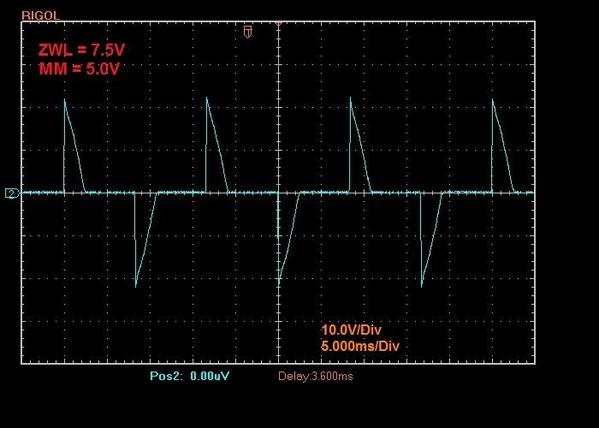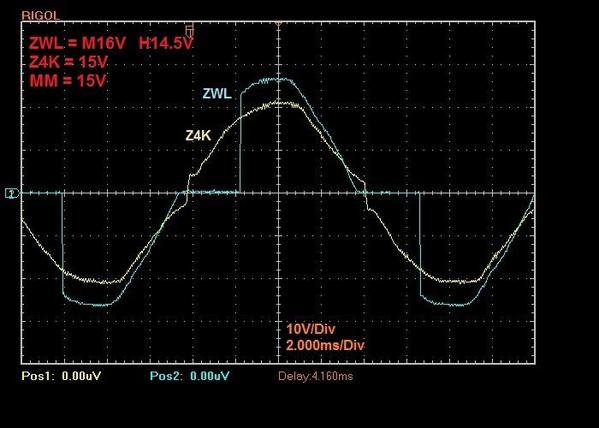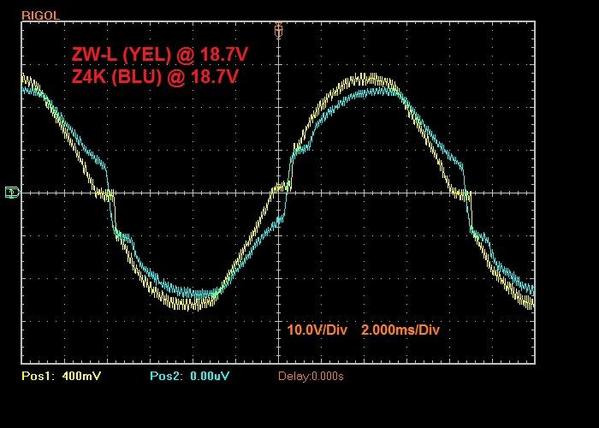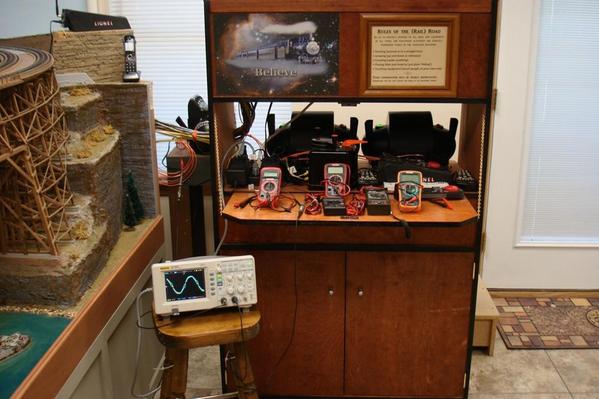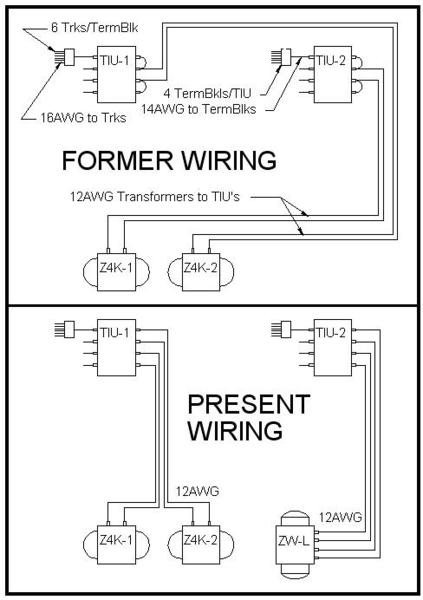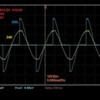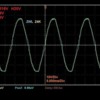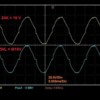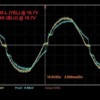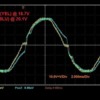On 20 January I started a thread under the MTH DCS and PS2/PS3 forum regarding the use of a ZW-L transformer. I now have gathered additional information, as suggested by Chuck and John, which may be useful to others who do not necessarily run DCS, so I decided to post this thread here. I hope this is OK.
A couple of days ago I ran some tests while the DCS TIU’s were connected to the track, and with all the transformers set at 18 to 20 volts. I measured the voltage with several multimeters, and selected the one that read the closest to the transformer meters. These traces are toward the bottom of the images.
Today I ran tests on just the transformers. I used one of my two Z4000’s and the ZW-L without connecting them to the track. The multimeter I used is a Craftsman 82141, and the oscilloscope is a Rigol DS1052E.
For each test, I set the transformers so their output read the same on the multimeter, and then saved the scope trace. I noted the multimeter reading as well as what the transformer voltmeters read, and also the markings on the ZW-L handle.
NOTES:
• I could not get the Z4000 to provide voltage under 10volts as indicated by its voltmeter or as read by the multimeter.
• The four outputs of the ZW-L read the same on the multimeter when raised to the maximum. I used output A, the right-most handle of the ZW-L.
• Except at the vary low voltages, the peak voltage level of the ZW-L was around 26-27V throughout, but the 'duty cycle' varied.
(Please, click on the fotos to see actual waveform shapes)
ZW-L set at 5V per the multimeter.
The ZW-L voltmeter read about 7.5V and the handle almost at the 8V mark.
Both transformers set at 10V
The ZW-L voltmeter reading is noted as M12.5V and the handle position as H10.5V (Peak is about 26V)
The Z4000 voltnmeter read the same as the multimeter in every case. (Peak voltage at 14.1V as would be expected = 10 x SqRt of 2)
Transformers set at 15V per the multimeter
ZWL peak is about 26V and Z4K is 21 (again, = 15 x SqRt of 2)
Same voltage setting (15V) but different time scale
Transformers set at 19V per the multimeter
Now both peaks are close to 27V (= 19 x SqRt of 2)
Same voltage setting (19V) but different time scale
NOTE: The Time Scale is 2.000ms/Div and not 5.000 (my mistake when noting it!)
Above time scale should be 2.000ms/Div
Same voltage setting (19V) but different voltage scale and separate displays
Transformers connected to the track while the TIU's also were connected and turned on.
The voltage readings per the multimeter. Note that the Z4K is a little shy of the ZWL here.
Raised the Z4K voltage about 1.4V to match the ZWL output level on the scope trace
The three transfomers
Test equiment
Old and new wiring of TIU's and transformers
Thank you for looking!
Alex




